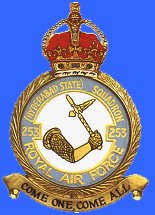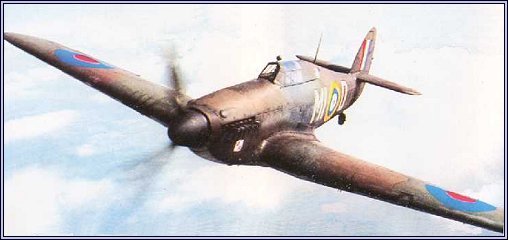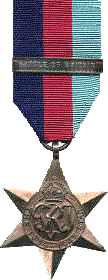BATTLE OF BRITAIN one of the |   |

After 60 years, and at the tender age of 80, the Battle of Britain appears quite benign and exciting. However, certain things stay with John, and will always be there following the two and a half months he was in the firing line. Firstly, he remembered that he could not eat until the flying was over for the day & lived on tomato juice. He also got a nervous tic in one eye, which continued for some months. He flew most days when the weather was flyable and most of the sorties were without incident. The sorties he remembers vividly were the first sortie when he found himself head-on to a ME110, which had two cannon and two .5 machine guns in the nose. He was far outgunned, so rolled onto his back and screamed for the ground. After pulling out he decided to return to base when he spied an HE111 running for home. John attacked it from above on the port quarter, firing all his ammunition, which resulted in both the HE111's engines to stop, then watched him force land in a field. This aircraft can be seen on Shot Down page. John remembers the head-on attack when nine of 253 squadron flew into 36 JU88's, they attacked line abreast, John as number two to the CO and right in the centre. The closing speed of around 600 mph was frightening and he could not break either right or left. He ended up pushing the stick hard forward, the engine cut out & the enemy went overhead by a few feet. Following the war, German records indicated that 253 squadron accounted for 5 enemy aircraft in that attack. In late October 1940, John found himself alone, which is very dangerous, when four ME109's flew over the top of his Hurricane by just 50 feet. He put his gun-sight button and gun button on, lifted the nose of the Hurricane and fired all eight machine guns. The aircraft immediately stalled and spun, as at 28,000 feet he was only doing 80 mph on the clock, very near stalling speed. The recoil of the guns reduced the speed to stalling. What happened to his burst of gunfire he will never know, but he believes he could not have missed from that distance. Lastly, and most importantly he remembers having breakfast with pilots he had known since joining the RAF, then at lunch time they were not there, hopefully they would return, but not many did. They were either in hospital or dead. At the age of 19, this is very traumatic. Of the original 253 squadron there are but two left today. |
 | The 1939-45 Star with Battle of Britain Clasp |